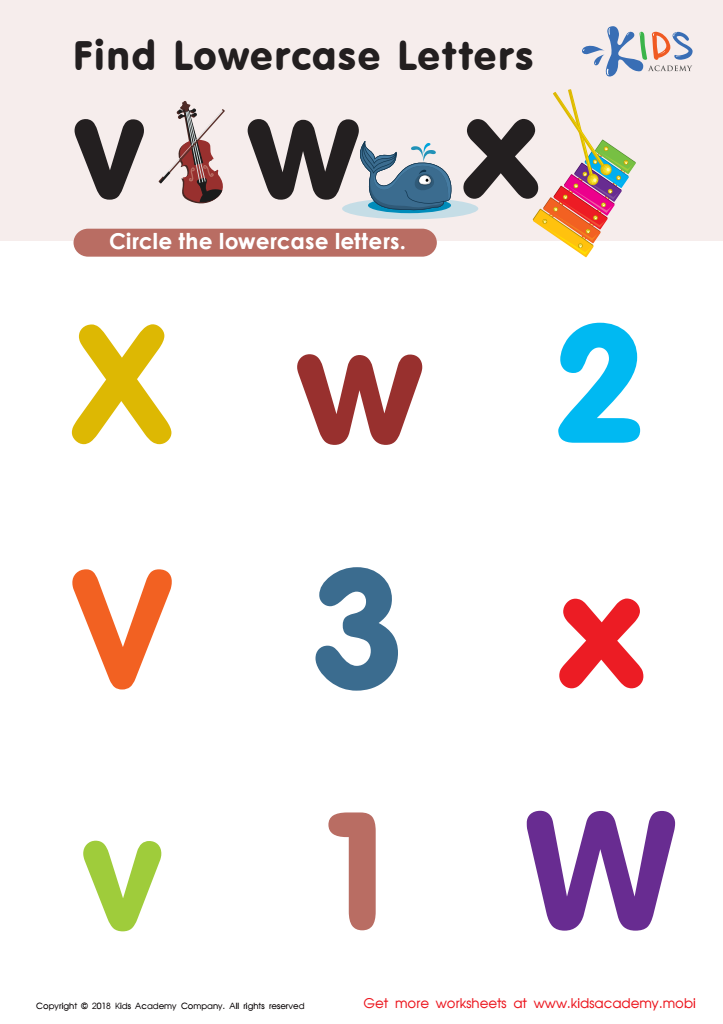Lowercase identification Normal Upper & Lowercase Letters Worksheets for Ages 5-8
4 filtered results
-
From - To
Welcome to our comprehensive collection of Lowercase Identification Worksheets designed for children ages 5-8! These engaging activities help young learners recognize and differentiate between normal uppercase and lowercase letters. With colorful illustrations and interactive tasks, your child will enjoy mastering the alphabet in a fun way. Each worksheet promotes essential skills such as letter recognition, handwriting, and phonics, making learning both effective and enjoyable. Perfect for preschool and early grade teachers, these printable resources can be easily integrated into your curriculum. Equip your child with the foundational knowledge they need to flourish in their reading and writing journey! Explore our worksheets today!


Find Lowercase Letters d e f Worksheet


Find Lowercase Letters y z Worksheet


Find lowercase letters a b c Worksheet


Find Lowercase Letters v w x Worksheet
Lowercase letter identification is a crucial foundational skill for children aged 5-8. Understanding both lowercase and uppercase letters builds robust literacy and communication abilities, which are essential for effective reading and writing.
When children can recognize lowercase letters, they are better equipped to read fluently, as most written English uses lowercase letters. This skill helps them decode words, understand text structure, and relate sounds to letters, enhancing their phonemic awareness and spelling skills.
Moreover, mastery of lowercase letters aids in developing fine motor skills, particularly when children begin writing. Proper formation of letters is essential for legibility, and familiarity with how letters appear in lower cases aids in reducing confusion.
For parents and teachers, supporting lowercase letter identification means fostering children's confidence in their literacy journey. It opens up essential communication channels, ensuring children feel comfortable engaging in reading activities, asking questions, and expressing themselves through writing.
This critical early intervention curtails future learning challenges and ignites a lifelong love for reading and writing. Thus, investing in lowercase letter identification is an investment in a child's educational success and emotional growth.
 Assign to My Students
Assign to My Students

















